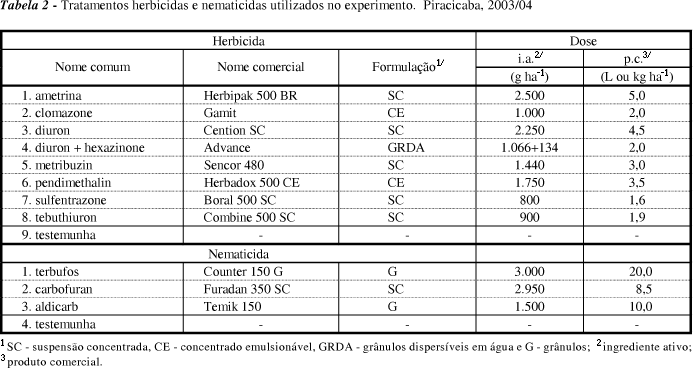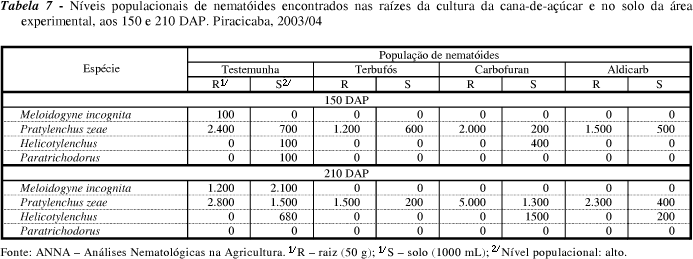Simultaneous applications of two or more classes of herbicides on a crop may promote ,totoxicity in the plants. Therefore, an experiment was conducted to evaluate herbicide selectivity in sugarcane, when applied under pre-emergence condition, in areas previously treated with nematicides on the planting furrow. The experiment was carried out in a commercial sugarcane area in Piracicaba (SP), from April 2003 to July 2004. The treatments resulted from the combination of nine herbicide factors and four nematicide factors. The herbicides used in the experiment were: sulfentrazone, tebuthiuron, metribuzin, ametrina, diuron, clomazone, pendimethalin and diuron+hexazinone, besides a hand-weeded check. The nematicides used were: carbofuran, terbufos, aldicarb and a check without nematicide. Phytotoxicity of the different combinations at 15, 30, 60 and 90 days after sprouting, yield (t ha-1) and qualitative technological parameters were evaluated. It was observed that the initial selectivity of the herbicides was reduced as a function of the interaction between the different classes used. Phytotoxic symptoms were acute, with the most serious cases originating from the association of nematicides with clomazone, pendimethalin and tebuthiuron. However, phytotoxic damages did not reflect a significant yield or qualitative losses, a fact that may have influenced injury recovery capacity, as presented by the RB 867515 variety, due to high nematode infestations or high experimental variability.
sugarcane; management; herbicides; interactions








